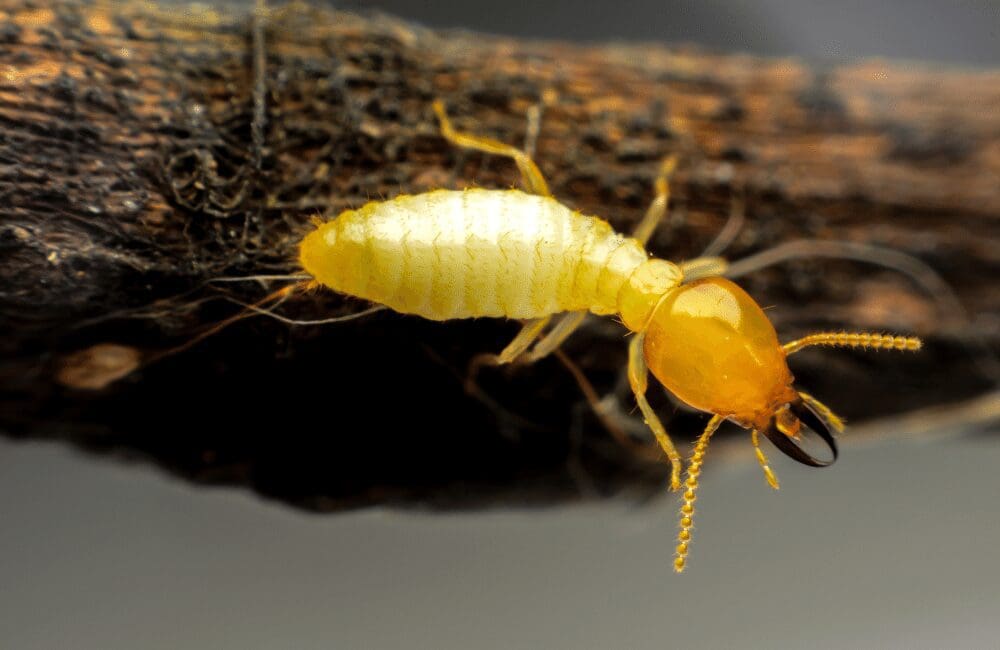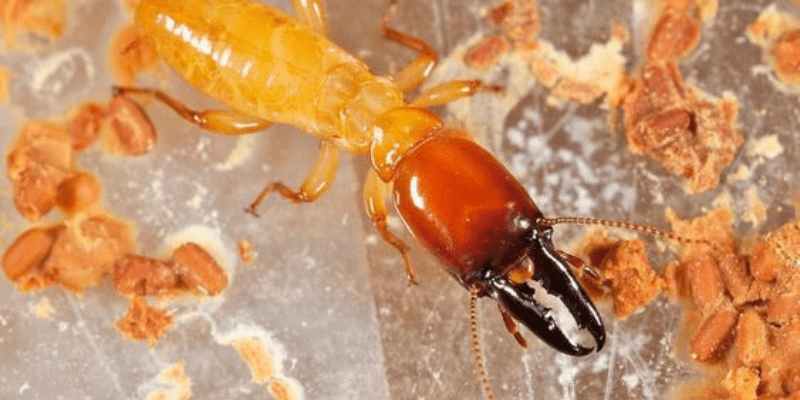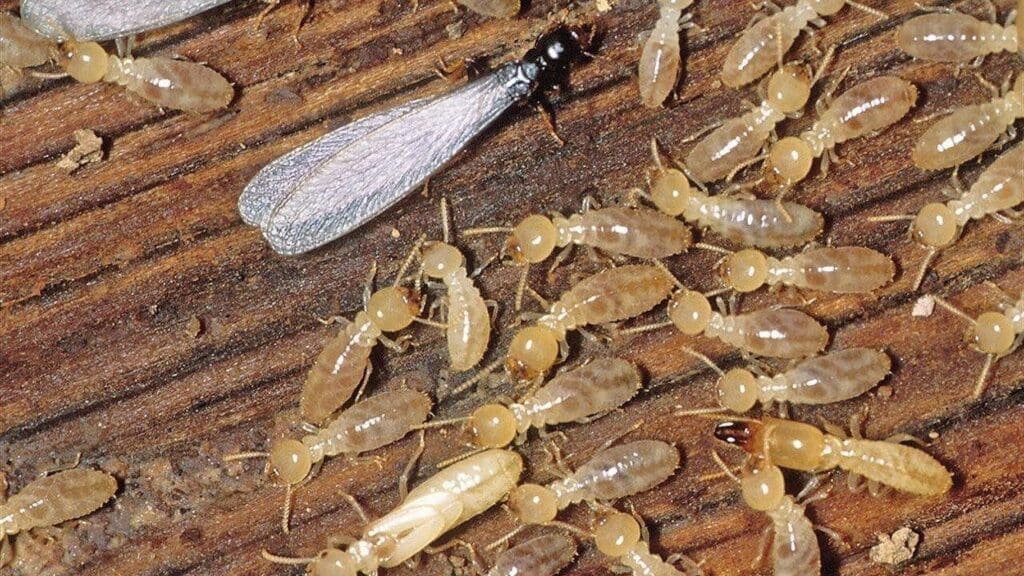Termites, the silent destroyers, may be small but their impact can be catastrophic. In this insightful article, you will uncover the fascinating habits of these tiny yet formidable creatures. From their insatiable appetite for wood to their complex social structure, you will gain an understanding of what makes termites such a formidable foe. Whether you’re a homeowner seeking prevention methods or simply intrigued by the world of pests, this article will shed light on the hidden world of termites and equip you with the knowledge to protect your home.

Understanding Termites
Termites are small, social insects that belong to the order Isoptera. They are often referred to as “silent destroyers” due to their ability to cause significant damage to homes and other structures. While they may seem harmless on the surface, termites can cause extensive damage to wooden structures, making it important to understand their habits in order to prevent infestations and protect your property. In this article, we will explore the different types of termites, their life cycle, habitats, diet, signs of infestation, the dangers they pose, prevention and control methods, natural predators, and tips for homeowners to keep their homes termite-free.
What are termites?
Termites are small, pale insects that live in large colonies and feed on wood and other cellulose materials. They play an essential role in the ecosystem by breaking down dead plant material and recycling nutrients back into the soil. However, when termites invade our homes and other wooden structures, they become pests and cause millions of dollars worth of damage each year.
The different types of termites
There are three primary types of termites: subterranean termites, drywood termites, and dampwood termites. Subterranean termites are the most common and cause the most damage. These termites build their colonies underground and create mud tubes to access above-ground food sources. Drywood termites, on the other hand, infest dry wood and do not require contact with the soil. Dampwood termites typically infest wet or damp wood and are less common in residential areas.
The life cycle of termites
The life cycle of termites consists of three main stages: the egg, nymph, and adult. After termites mate, the female lays eggs that hatch into small, wingless nymphs. These nymphs then molt several times before developing into either workers, soldiers, or reproductives. Workers are responsible for colony maintenance and foraging for food, while soldiers defend the colony against threats. Reproductives, also known as swarmers or alates, have wings and are tasked with starting new termite colonies. The life cycle can vary depending on the species and environmental conditions.
Termite Habitats
Where do termites live?
Termites can be found on every continent except Antarctica. They thrive in warm, humid environments and are most commonly found in tropical and subtropical regions. However, termites can adapt to various climates and can survive in temperate regions as well. Termites typically build their nests in soil, wood, or other materials that contain cellulose.
Preferred conditions for termites
Termites are attracted to environments with a high moisture content and a readily available food source. The presence of water, such as leaks or excess moisture in and around a structure, can create the perfect conditions for termites to thrive. Additionally, termites are drawn to wood or other cellulose materials that are in direct contact with the soil, as it provides them with easy access to both food and moisture.
Common hiding spots for termites
Termites are highly skilled at hiding and can often go undetected until significant damage has already been done. Common hiding spots for termites include the foundation of a building, crawl spaces, voids in walls, attics, and basements. They can also be found in wooden structures such as fences, decks, and furniture. It is essential to regularly inspect these areas for any signs of termites to catch an infestation early.

Termite Diet
What do termites eat?
Termites primarily feed on cellulose, which is found in wood and other plant-based materials. Cellulose is a complex carbohydrate that provides termites with the energy they need to survive. Termites have special bacteria and protozoa in their digestive systems that break down cellulose into simpler forms that can be digested.
Wood-based diets
The most common food source for termites is wood. They will burrow into and consume the cellulose within wooden structures, causing significant damage over time. Termites are capable of eating various types of wood, including softwoods, hardwoods, and even wood that has been treated with preservatives.
Other food sources for termites
While wood is their preferred food source, termites can also feed on other cellulose-containing materials. These include paper, cardboard, plant fibers, and even certain types of fabric. Termites are opportunistic feeders and will take advantage of any available food source within their reach.
Signs of Termite Infestation
Visible signs of termite damage
One of the most evident signs of a termite infestation is the presence of mud tubes or tunnels along the foundation of a building or on other wooden surfaces. These tubes provide termites with protection and moisture as they travel between their nest and a food source. Additionally, you may notice sagging or drooping floors, hollow-sounding wood when tapped, or walls that appear blistered or discolored.
Indications of a termite nest
Termites build their nests in hidden areas, making them difficult to detect. However, there are some indications that can hint at the presence of a termite nest. Look for piles of discarded termite wings, which are left behind when swarmers shed their wings after mating. You may also find small holes or cracks in wood where termites have entered or exited their nest.
Signs of termite activity
Besides visible damage and indications of a nest, there are other signs that can indicate termite activity. These include soft, spongy, or crumbling wood, the presence of small, pellet-like droppings called frass, and a musty odor that can be emitted by termites. Keep an eye out for any of these signs to identify a potential termite infestation.

The Dangers of Termite Infestation
Structural damage caused by termites
Termites pose a significant threat to the structural integrity of buildings. As they feed on wood, they can weaken the structural supports, leading to sagging floors, buckling walls, and even collapse in severe cases. This can result in costly repairs and compromises the safety of the occupants.
Health risks associated with termites
While termites themselves do not pose a direct health risk to humans, their presence can indirectly impact your well-being. Termites create conducive environments for mold growth by creating moisture issues within the structure. Mold spores can lead to respiratory issues and allergies, especially for individuals who are already sensitive to airborne allergens.
Financial implications of termite damage
The financial implications of a termite infestation can be significant. Homeowners insurance typically does not cover termite damage, leaving you responsible for the costs associated with repairs. The average cost of termite damage repair in the United States can range from hundreds to thousands of dollars depending on the extent of the damage.
Prevention and Control
Preventing termite infestation
Prevention is key when it comes to termites. There are several steps you can take to minimize the risk of an infestation. Start by eliminating moisture problems in and around your home, such as fixing leaks and improving drainage. Keep firewood, lumber, or any other wooden materials stored away from the foundation and above ground. Additionally, ensure that there is a gap between soil and wooden structures to prevent direct contact.
Do-it-yourself termite control methods
While professional assistance is often recommended for termite control, there are some do-it-yourself methods you can try. For example, you can use liquid termiticides to create a chemical barrier around your home’s foundation or apply termite bait stations to attract and eliminate termites. However, it is important to note that these methods may not be as effective as professional treatments and should be used as a temporary solution.
Professional termite control options
When facing a termite infestation, it is best to seek professional help. pest control professionals have the knowledge, experience, and tools necessary to effectively eliminate termites and prevent future infestations. They can tailor treatment options to your specific situation and may use techniques such as liquid treatments, termite barriers, or fumigation, depending on the extent of the infestation.

Natural Predators of Termites
Insects and animals that prey on termites
Termites have several natural predators that help control their populations in the wild. Some insects, such as ants, beetles, and spiders, feed on termites and their eggs. Certain species of birds, reptiles, and mammals, including lizards, armadillos, and anteaters, also prey on termites. These natural predators play an essential role in maintaining the balance of termite populations in their respective ecosystems.
The role of natural predators in termite control
While natural predators can help control termite populations in outdoor environments, they are generally insufficient for eliminating termite infestations within human structures. Pest control professionals employ targeted methods to address termite infestations effectively. However, encouraging natural predators by maintaining a diverse ecosystem around your property can help reduce termite populations and make your property less attractive to these destructive insects.
Termite Prevention Tips for Homeowners
Keeping your home termite-free
To keep your home termite-free, there are several preventive measures you can take. Regularly inspect your property for signs of termites, paying close attention to vulnerable areas such as the foundation, wooden structures, and moisture-prone areas. Keep vegetation, debris, and mulch away from the foundation, as they can provide a conducive environment for termites. Additionally, ensure proper ventilation in attics and crawl spaces to reduce moisture levels.
Regular inspections and maintenance
Regular inspections are crucial to catch termite activity early on. Consider hiring a professional pest control company to conduct annual termite inspections for your property. They can identify early signs of infestation and recommend appropriate treatments if needed. Additionally, practicing good home maintenance, such as repairing leaks, sealing entry points, and keeping your property clean and dry, will go a long way in preventing termite infestations.
Landscaping techniques to deter termites
The way you design and maintain your landscape can also help deter termites. Plant termite-resistant species of trees, shrubs, and flowers around your property. These include plants with high levels of natural toxins, such as cedar, eucalyptus, and rosemary. Additionally, create a physical barrier between your home and the soil by installing gravel or mulch strips around the foundation. This makes it more challenging for termites to access your home.

How to Identify and Treat Termite Damage
Detecting termite damage
Identifying termite damage early is crucial for effective treatment. Look for signs such as hollow or damaged wood, buckling paint or wallpaper, and mud tubes along the foundation or walls. Probing the wood with a screwdriver can help you determine if it is sound or if it crumbles easily, indicating termite damage. If you suspect termite activity, contact a pest control professional for a thorough inspection and treatment plan.
DIY methods for treating termite damage
Treating termite damage on your own can be challenging and may not provide lasting results. However, there are some DIY methods you can try, such as injecting termiticide directly into infested wood or using wood treatments that kill termites and protect against future infestations. Keep in mind that these methods are best used as temporary solutions, and professional assistance should be sought for proper treatment and prevention.
When to seek professional help
It is recommended to seek professional help when dealing with a termite infestation, especially if the damage is extensive. Pest control professionals have the expertise and access to more effective treatment options. They can accurately assess the extent of the infestation, formulate a targeted treatment plan, and provide long-term solutions to prevent future infestations.
Termite Control Products and Reviews
Effective products for termite control
Several products on the market can help control and eliminate termite infestations. Liquid termiticides, such as imidacloprid and fipronil, create a chemical barrier around structures to repel and kill termites. Termite bait systems, like those containing hexaflumuron or diflubenzuron, can be effective in attracting and eliminating termites at their colonies. Most termite control products are best used by professionals to ensure proper application and efficacy.
Comparing different termite control options
When choosing a termite control option, it is important to consider factors such as the extent of the infestation, the location of the infested area, and any specific needs or concerns you may have. Liquid treatments are a popular choice for both preventive and curative termite control. Termite bait systems are often used for long-term monitoring and elimination. Fumigation may be necessary for severe infestations. Consulting with a pest control professional is recommended to determine the best option for your situation.
Product reviews and recommendations
To find the most effective termite control products, it can be helpful to read reviews and recommendations from reputable sources. Look for reviews from trusted pest control experts or reputable websites that specialize in pest control products. Additionally, consider seeking recommendations from friends, family, or professionals in the field. Their firsthand experiences can provide valuable insights into the effectiveness and reliability of different termite control products.
By understanding termites, their habitats, diet, signs of infestation, and the dangers they pose, you can take proactive measures to protect your home and property. Regular inspections, preventive measures, and professional assistance when needed will help ensure that you remain termite-free. Remember to consult with trusted professionals and use effective termite control products to address any infestations or damage promptly. With proper knowledge and action, you can safeguard your property from the silent destroyers known as termites.

I am Randy, the author behind PestControld.com. Drawing from decades of experience, I aim to provide valuable insights, expert advice, and practical recommendations to help you make informed decisions when assessing viable pest control solutions.